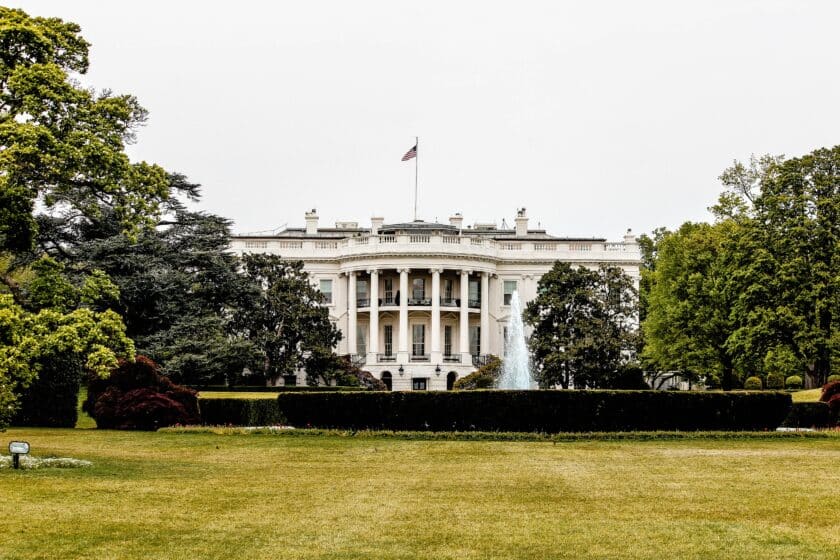The US debt ceiling: as one deal is made another contentious one looms. Which is hwy investors need to keep any eye on negotiations, says Lizzy Galbraith, Political Economist, abrdn
The fraught wrangling between Republicans and Democrats about whether or not to raise the upper limit of the government’s debt allowance – the ‘debt ceiling’ – is now a regular fixture in US politics.
Unfortunately, increased political polarisation, as well as more frequent changes in the parties controlling Congress, are only going to cause this to happen more often.
The latest agreement was reached in June, but one group of Republicans still unhappy with the deal is planning on making further efforts to bring down government spending below agreed levels, and already the September appropriations negotiations look set to be contentious enough to result in a government shutdown. And failing to reach on the 2024 budget by 1 January 2024 will result in a blanket 1% cut to all budgets.
Although the likelihood of the US defaulting on its debt remains slim, the concessions on fiscal policy that have to be made as part of debt-ceiling deals, not to mention the market volatility around the so-called ‘x date’ – when the federal government can no longer meet its commitments – all mean investors do need to keep a close watch on these key debt-ceiling negotiations.
With the current structure of Congress, the likelihood of political conflict around raising the US debt ceiling this year was always going to be high.
The most contentious debt-ceiling negotiations tend to occur in the current political situation, when Democrats control the White House and the Senate, while Republicans hold the lower House of Representatives.
An element of bipartisan compromise is needed to reach any agreement, but typically Republicans seek greater spending cuts than Democrats are willing to give, resulting in drawn out negotiations. Voting patterns show that political polarisation has increased, which makes agreement harder to achieve.
In the last round of tough debt-ceiling negotiations, a deal was approved by Congress at the last minute on June 2, just three days before the government would have exhausted its cash balances rendering it unable to borrow any more money. The last-minute nature of debt-ceiling agreements contributes to the market stress we tend to see in the run up to a deal being reached.
This volatility tends to disappear quickly, but there can be long-lasting effects from close run debt- ceiling negotiations. The fraught negotiating can lead to heightened stock-market volatility, even once agreement has been reached, and increases the costs of insuring US government debt. Indeed, the 2011 debt-ceiling crisis resulted in a downgrade to the US credit rating. This year, after putting the US on ‘negative watch’, ratings agency Fitch stripped the US of its triple-A borrower status at the start of August.
The deal that was struck in June between President Joe Biden and Republicans means cuts to government spending over the next two years, while suspending the debt-ceiling until January 2025. Non-defence spending will be held mostly flat relative to 2023 in 2024, with budgets increasing by 1% in 2025.
Given the pace of inflation, this amounts to a modest cut to government spending, but is less than the 9.2% reduction Republicans had originally requested.
The biggest impact of the deal is likely to be that the government will be unable to introduce large spending programmes to support the economy if the US slips into recession. The risks of the US defaulting on its debt have receded since the deal was passed and signed into law, but there are significant repercussions.
The small group of unhappy Republicans continues to demand significantly greater spending cuts than those agreed. This sets up the 2024 budget negotiations process as the next high-stakes moment in US politics, with potentially significant implications for businesses exposed to US government funding, as well as those in receipt of food assistance programmes.
The 2024 government budget should be passed by 31 September, but this appears to be unlikely given the current political divide on spending. Congress is able to pass a short-term extension to the current budget, limiting immediate short-term risks. Failure to agree either the 2024 budget or an extension to the current budget, would result in a government shutdown from 1 October.
Failure to agree a budget following the end of an extension, would likely result in a government shutdown in early 2024.
Under the terms of the debt-ceiling agreement, failure to reach an agreement on the 2024 budget by 1 January 2024, will result in a blanket 1% cut to all budgets, which would further reduce the government’s ability to bring in new spending measures ahead of the 2024 election.
The recent debt-ceiling clash is only one example of the ways in which politics in the US can have market implications. With the government budget negotiation process yet to begin and the 2024 US presidential election beginning to appear over the horizon, policy volatility and uncertainty over the direction of travel may weigh on markets.
This trend shows little sign of abating any time soon, making domestic politics in the US a key area to watch going forwards.
[Main image: rene-deanda-zfKlCKK-Ql0-unsplash]






























